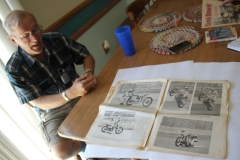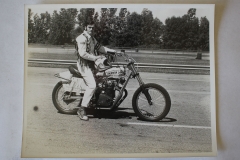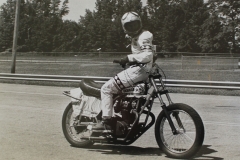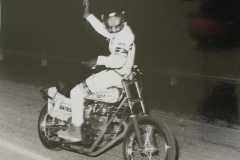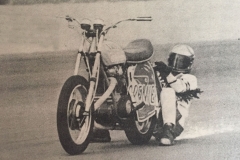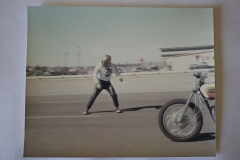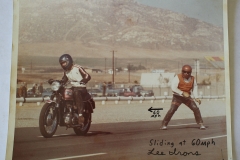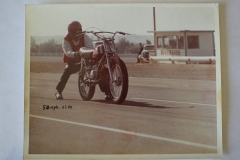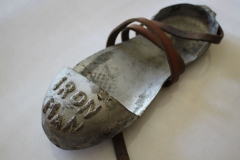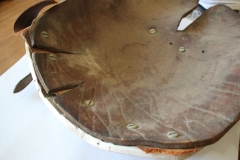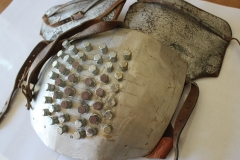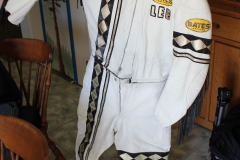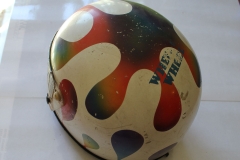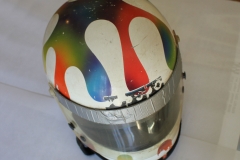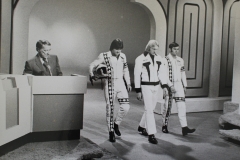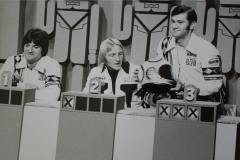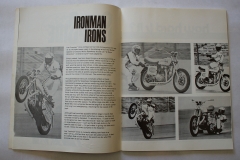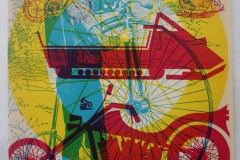A Cycle Stunt Legend Takes Us On A Trip Down Memory Lane
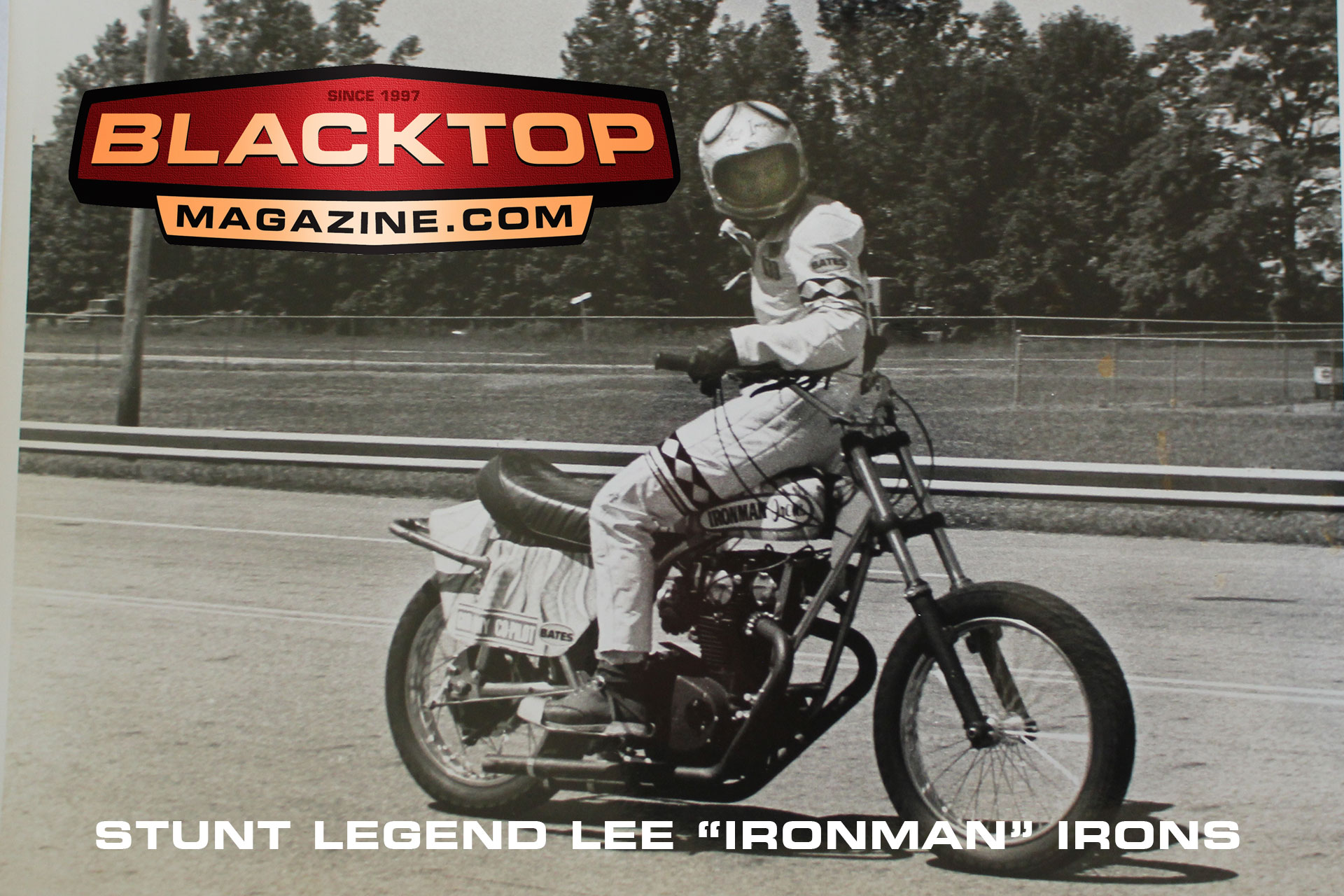
[EDITOR: We just learned today 12/23/20 that Lee passed away last night. Rest in Peace Brave Soul.]
The other day, I got a message from our buddy Keith at Sunnymead Cycles. Keith is a great guy and helped us out quite a bit as we put together the “Rapidago” project. He comes across some cool old stuff and for a time was restoring the small bikes from Indian, Harley and other manufacturers. Anyway, he messages me about meeting 70’s motorcycle stunt legend from Riverside, CA Lee “Ironman” Irons. Apparently he ran into him at the local hardware store in Moreno Valley. He asked if we would like to come out and meet him and maybe do an interview.
I said: “Heck Yeah!”
We get in touch with Lee and the next thing we know we are sitting in his dining room going over some old photos and stories of his 15 minutes of fame.
The table is filled with photos, newspaper clippings, magazine articles and posters. Lee was a “Safe” daredevil. He wasn’t interested in jumping cars or busses or fountains or even canyons. He liked going fast, doing wheelies and sliding on the track shooting sparks. He liked doing things that have never been done before and entertaining his fans along the way. He was featured in many magazines of the ere. He was a feature on the TV Show “Thrillseekers” hosted by Chuck Connors (click here for video) and was even a guest on the game show “To Tell The Truth”.
It was in the late 1960’s when Lee started doing motorcycle stunts around town.Lee got with a car club in the Riverside area and performed small shows when the car club would be hosting a drag race event. Lee would perform long wheelies and standing on the seat wheelies he starts at 35 and build up to about 85mph after about a half mile. At 105mph he would jump off and hold onto the back of the bike and slide on special steel shoes at a constant speed. He does his “Hot Seat” stunt at about 85 mph. Another favorite is when his aid Kirk would ride Lee on the back of the bike at about 90, Lee would jump off and “Free Slide” down the track about a half mile or so to a stop.
In 1969 Lee went down to Orange County to see Kenny Brown’s show at OCIR. He was underwhelmed at the show and knew he could do better stunts. “If Kenny could make money doing this, I should be able to make a killing with my stunts!”
Lee then went to Ken Maely, who was famous for making steel shoes for motorcycle flat track racers. Ken knew everyone. Ken’s Yamaha rep knew Bob Graham, the racing director at Ontario Motor Speedway. Lee went out to “audition” for him. Bob signed on Lee to entertain the crowd before every big race at Ontario. This was early 1971 and was able to go down 3-4 times a week to practice. The front straight away was slightly banked, so he had to practice his wheelies on a banked track.
Lee put on his first really big show for the 1971 California 500.
The most difficult trick to learn was riding backwards. Lee had a small bike at the time, and went out in the dirt to practice. Everything is just wrong when you ride backwards. The clutch and brakes are on the wrong side, the throttle twists are backwards. It’s a mess. He finally got it down on the small bike and went on to his 650 on the pavement. He was able to ride it pretty good till one day at practice.
“I was practicing out at Ontario Motor Speedway, going down the straightaway backwards and got up on the banking and was a bit around the banked corner and hit a speed wobble. The bike was trying to throw me over the bars, and I got down off the banking and into the grass to slow it down enough to not crash.” Lee recalls.
He had then learned to put two dampeners from the frame to the forks, to cure the wobble. Then a couple of years later, he was out practicing and talking to this old guy at the track. The guy was there at the track when he saw the speed wobble episode. Lee would love to see a video of that episode, but unlike today, people weren’t taping everything back then.
This program Lee had was pretty simple to travel with. He had a full-size van for both bikes, equipment, tanks. He and his wife would travel around the country. Usually returning home after each performance, to work his regular job. Once you get into the jumping thing, then you would have to have a crew to build the ramps, and trucks to transport it all. This was a part-time job or paying hobby for him.
Lee really liked the night-time sliding tricks with sparks flying. Especially the Hot Seat. The hot seat is an elephant hide lined coal shovel that he would strap to his waist. The trick is to run the bike around 60 miles per hour, set the throttle, jump off the back of the bike, holding on to a grab bar he installed. Sliding on his metal shoes first, then sitting down and sliding on his rump. Later versions used a thick aluminum alloy seat with bolts wrenched into the base. (see pic)
Lee tells a quick story: “One time I was practicing at one of the 500’s and AJ Foyt, Andretti and some other guys were sitting on the pit wall watching me during their lunch break. I was doing the hot seat going down the straight away and I go to get up and right then, I am going over the start finish line, a thick vinyl patch which knocked my feet out from under me! I am going along hanging onto the back of this bike with the throttle stuck open, going along on my knees and I can’t get my feet back under me. I had a switch to shut the thing off, but I’d have to let go to do that. So I am going along, finally I got up a bit and hit the switch with my elbow to get it turned off. Back in the pits, my friend Kirk was with me, I toss the bike to Kirk, and I look down at the leathers. I went through the two outer layers of leather, the foam pads, and the leather on the inside and had only the lining on knees left.”
All the while the racers were in shock watching this unfold in front of them. A. J. Foyt comes over to them and says, Hey, why didn’t you let go of that thing?
Kirk tells him: “He couldn’t, he is still making payments on the thing.”
And that’s how it was. Here is this regular guy, making do with what he has to live his dream. He misses the travelling around with his wife and family.
Ken Maely made the metal shoes. Ken was famous for making left foot shoes for speedway and flat trackers, Lee was the only guy with shoes for both feet. Ken had quite the south of Corona, CA. He would buy band-saw steel from the mills up north, and would have them cut and stamped. He would make shoes for different surfaces. Hard packed surface would have a flat shoe, for soft dirt the shoes would have a “V-hull” design to cut into the sandy dirt. Ken also had this totally special German hardfacing solder. Ken would go to the docks and go through customs to get a stick that he could solder. He had a 5 gallon bucket of cyanide powder and when he had the shoes all formed correctly, he would get it red hot and at the right moment stick it in the bucket of cyanide powder to make it strong but not brittle. Ken added a car a leaf spring to the bottom of Lees shoes for the night time shows.
Lee’s helmet was sponsored by Premier. He had different artists paint them up. What is missing on this helmet is the wheel. A signature for Ironman, was his wheelie helmet. He would silicone a little caster on the top of his helmet to use as a wheelie wheel. Lee would give his helmets back to Premier after he was done for a season. Lee would also give Motorcycle Safety Assemblies at local High Schools.
He gave us a teachable moment: “The only way a helmet works is to absorb the energy. Then they came out with polycarbonate helmets were easy to make, and strong, but don’t absorb anything. I would put a concrete block on stage and drop a polycarbonate helmet on the block and it would bounce, then I’d dropped the fiberglass helmet on the block and it would stay, absorbing all the energy. My head aint going in one of those polycarbonate jobs. Helmets have to self-destruct in order to save your head.”
As for the leathers, they had found that as it get’s hotter it get’s slicker. So you can slide rather than grip and twist and tumble. Bates gave him some leathers of guys who have crashed to show how it gets slick to slide for his HS assemblies.
“Back then, I think it is fair to say, I was doing stuff that people were saying there’s no way somebody can do that!” Now there are a lot of guys doing stuff that I say nobody can do. And they do it.” Lee tried to make a living at it, but really never got to that standing. In 1977 he realized it wasn’t going to take off like he hoped it would and as tracks started to close, he decided it was time to hang it up.
It was really special being able to sit down for a morning and hear his stories. We hope you enjoyed this trip with us down memory lane with the one and only, Lee “Ironman” Irons.
One parting note: Lee asked that I invite anyone who wants to get in touch with him to contact him on his Facebook page here.

